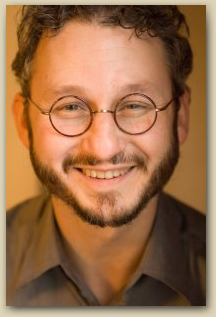Aids vs Additions #3 – Are Meeting Places Authorized?
In number #1, we established that Aids are unavoidable in obeying commands. Every command of God involves some means or mode that are man-made. When it comes to commands (Heb.10:25) and examples (Acts 2:46) to meet together, obviously it is unavoidable to meet without having a place to meet. Therefore, a “meeting place” fits criteria #1 as a necessary inference.
In #2, we discussed that Aids become Additions when they substitute the command. Having a place to meet obviously is not a substitute for meeting since that is exactly what is being accomplished. Therefore, a “meeting place” does not violate #2. But more on this at the end.
However, there are other Biblical principles to consider.
1. Does the word of God specify a specific place (Specific Authority)?
Considering there are various places used by the first century congregations, the answer is no. Whether homes (Romans 16:5), the temple (Acts 2:46), or a local school (Acts 19:9), various places are mentioned. History shows caves were employed, probably out of necessity in hiding. While not churches per se, Christians did attend meetings held by unbelievers in synagogues also, even up to 3 months (Act 19:8). I wonder if the Greek word employed in James 2:2, “synagoge”, suggests synagogues became “church buildings”. Archeology Magazine shows evidence of a “church building” as early as the first century in Capernaum.
2. Does the word of God authorize church funds for spiritual activities?
Considering the many examples within the NT, we can see that mainly contributions were raised for needy saints (1 Cor.16:1-2), and supporting preachers (Philippians 4:14ff).
Is a congregation being built up spiritually a work or function of a local meeting? Yes, Ephesians 4 shows such. Whatever then is necessary to that accomplishment becomes authorized (here is where social activities become suspect as a “work of the church”). That would include a meeting place. However, there is more to consider.
3. Are church buildings wise?
Paul sets forth a principle in 1 Corinthians 10:23 that not everything that is lawful is expedient. Furthermore, in 1 Timothy 5 while discussing an authorized work – supporting needy widows indeed – Paul sets forth another principle: don’t let the church be burdened (1 Timothy 5:16).
There is no doubt that local congregations can be too eager when small, to “get established”, and church buildings can impede the financial freedom to help needy saints and support preachers and themselves evangelize.
I would also suggest there is no doubt that local congregations can be too extravagant when large, to “become mainstream”. History shows how buildings have become far more ornate when groups themselves become more socially accepted.
This is where wisdom is needed.
1. Is the church building unavoidable? Sometimes. Depends upon the size of the local congregation. If one argues for several smaller “house churches”, such is acceptable as a freedom; but one must beware of making rules God hasn’t.
2. Is the church building expedient? Depends upon the size and needs of the local congregation. If Bible classes for various ages is scriptural, then having spaces becomes fitting.
3. Is the church building a burden? Depends upon the financial ability of the local congregation. My parents helped a local group by guiding them into a price range that my parents could themselves afford to take over if necessary.
4. Is the church building authorized? Depends upon the above criteria.
I like buildings that are “invisible” in being neither extravagant nor an eyesore. Buildings can be aids, and if wrongly emphasized can become substitutes for real needs and proper functions.
If your congregation has a building, be thankful to God while remaining diligent to stay focused. The church building is not the church. And, the church building must always remain an aid and not become a substitute for the church being a church.



 Perrydox.com is devoted to the pursuit of truth, whether plain or paradoxical, whether simple or sublime, or simply absurd yet absolute.
Perrydox.com is devoted to the pursuit of truth, whether plain or paradoxical, whether simple or sublime, or simply absurd yet absolute.

Comments